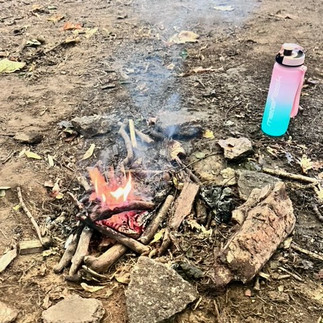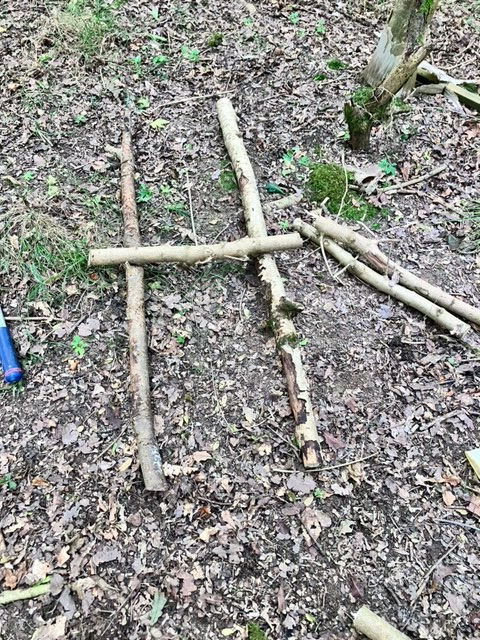2.3- Assignment (Unit 2): Demonstrate how to safely extinguish a campfire & explain how this can be taught to a client group
- Naomi Harvey

- Aug 25, 2024
- 2 min read
Ensure before extinguishing:
The fire is contained within our campfire space
The fire has died down and starting to cool
Resources to use to extinguish the fire - Watering can, bucket of water and a long stick to disturb the embers.
First thing to do is to break up the embers and ashes and expose any hot spots. Try to separate as many embers as possible as safely as you can.
Starting from the outside of the campfire, carefully pour water in a circular motion on the edge, slowly moving towards the centre. We pour slowly because pouring water quickly on fire can cause a swell of smoke which could be dangerous, also reducing the risk of embers being thrown up and reigniting or spreading the fire.
Once the water has been spread through, use your long stick to stir the wet ashes and embers, if there are any glows of embers or hot spots discovered, continue adding water until no longer hot or glowing.
Using the back of your hand near the ash to check for any remaining heat, do not touch the ash directly.
Once cold, pour water around the perimeter of the campfire to ensure any strays of embers or sparks have been extinguished.
Before leaving the area, make sure everything is completely cool to the touch and there is no smoke, heat or embers remaining. The area should be safe and the fire should be completely out.
TIP: If you run out of water you are able to use dirt or sand to cover the fire and smother the embers, make sure you stir the dirt or sand to make sure everything is cooling and being snuffed out.
When teaching to a client group, there are specific things we need to remember to discuss:
Explain why we extinguish a fire and the importance of safety and prevention of wildfires. Discuss the importance of unattended fires on the environment and local wildlife.
At each step of the process, explain to the children what we are doing and why, let them take part in some of the elements, pouring the water and pushing the ashes around with a stick, having hands-on experience means it will be more likely to reinforce learning memory. Make sure they keep a safe distance, as the fire will still be warm at this point.
Reminder of safety equipment - keeping water near the fire and using fire gloves, a fire blanket and Fire First aid kit.
Finally at the end of the session, use this as an opportunity for reflection, ask the children to walk through the steps of what we have just completed and why it is important that we have completed all steps.













Comments